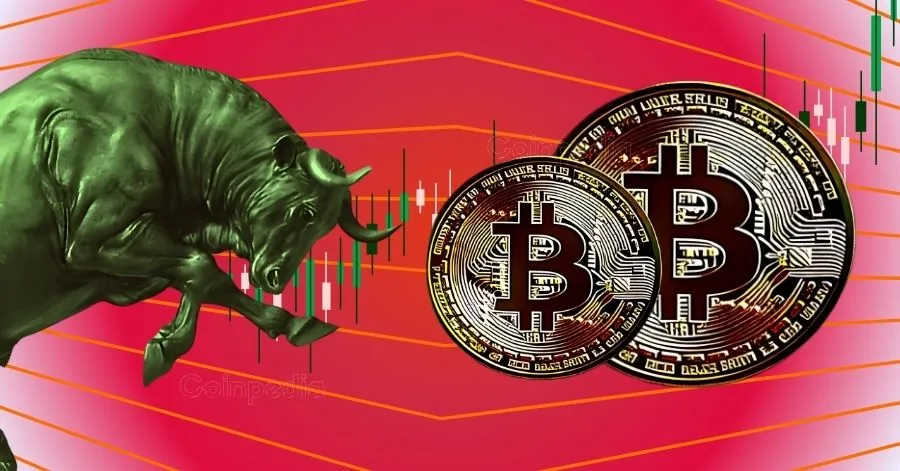
Bitcoin’s Bullish Trajectory: Analyzing the Factors Behind Its Surge
The cryptocurrency market is no stranger to volatility, but Bitcoin’s recent performance has turned heads across financial circles. As the pioneer of digital currencies, Bitcoin has once again proven its resilience and capacity for explosive growth. Currently trading at $104,000—just 5% shy of its all-time high of $109,000—the flagship cryptocurrency is riding a wave of institutional interest, regulatory optimism, and bullish technical indicators. Analysts like Timothy Peterson are doubling down on ambitious predictions, suggesting that Bitcoin’s rally is far from over. But what’s fueling this momentum, and how sustainable is it? Let’s break down the key drivers behind Bitcoin’s latest surge.
1. Institutional Demand and ETF Inflows: The New Catalyst
One of the most significant shifts in Bitcoin’s recent rally is the influx of institutional capital, particularly through Bitcoin Exchange-Traded Funds (ETFs). Peterson highlights ETF fund flows as a primary driver of Bitcoin’s upward trajectory. Unlike retail investors, institutions bring deeper pockets and longer-term commitments, providing stability and legitimacy to the market. The approval of Bitcoin ETFs in major financial markets has opened the floodgates for pension funds, hedge funds, and even traditional asset managers to gain exposure to crypto without directly holding it.
This institutional embrace isn’t just about speculation—it’s a recognition of Bitcoin’s maturation as an asset class. As more Wall Street players allocate funds to Bitcoin ETFs, demand surges, creating a self-reinforcing cycle. The sheer volume of capital entering these funds suggests that Bitcoin’s current rally may have stronger legs than previous retail-driven pumps.
2. Market Sentiment and the VIX Factor
Another critical element in Bitcoin’s rise is the broader market’s risk appetite, as reflected in the Volatility Index (VIX). Peterson points out that the VIX—often called the “fear gauge”—has been trending downward, signaling reduced investor anxiety in traditional markets. Historically, low volatility environments encourage capital to flow into riskier assets, including cryptocurrencies.
Bitcoin, with its high-beta nature, thrives when investors are willing to take on more risk. The current VIX levels suggest that traders are betting on stability, freeing up capital for speculative plays. This dynamic is particularly relevant given Bitcoin’s historical inverse correlation with the VIX during bullish phases. If this trend holds, Bitcoin could continue to benefit from a “risk-on” market mentality, pushing it toward new highs.
3. Regulatory Winds and Political Tailwinds
Regulatory uncertainty has long been a stumbling block for Bitcoin’s mainstream adoption. However, recent developments hint at a potential shift. In the U.S., President Trump’s pro-crypto stance and growing bipartisan discussions around clear regulatory frameworks have injected optimism into the market. Clarity on issues like taxation, custody, and exchange oversight could remove significant barriers for institutional participation.
Beyond the U.S., other jurisdictions are also warming up to Bitcoin. Countries like Germany and Singapore have introduced clearer guidelines, while El Salvador’s Bitcoin adoption experiment continues to draw attention. A favorable regulatory landscape not only reduces investment friction but also enhances Bitcoin’s appeal as a hedge against geopolitical instability and inflation.
The Long-Term Vision: Metcalfe’s Law and the $1.5 Million Prediction
While short-term factors are driving Bitcoin’s current surge, Peterson’s most audacious forecast is a long-term price target of $1.5 million by 2035. His thesis hinges on Metcalfe’s Law, which states that a network’s value grows exponentially with its user base. Bitcoin’s adoption curve—from tech enthusiasts to corporations and even nation-states—supports this premise.
The increasing integration of Bitcoin into payment systems, decentralized finance (DeFi), and institutional portfolios suggests that its network effects are accelerating. If adoption continues at its current pace, Peterson’s prediction, though staggering, isn’t entirely implausible. However, skeptics argue that scalability issues, regulatory crackdowns, or the rise of competing cryptocurrencies could dampen this growth.
Conclusion: A Perfect Storm for Bitcoin?
Bitcoin’s latest rally is the result of a confluence of factors—institutional money, favorable market sentiment, and regulatory progress—all converging at once. While short-term volatility is inevitable, the broader trend appears bullish. Whether Bitcoin reaches Peterson’s lofty $1.5 million target remains speculative, but one thing is clear: the cryptocurrency is no longer a niche asset. It’s a global financial phenomenon, and its next chapter could redefine the future of money.
For investors, the key takeaway is to watch the interplay between ETF inflows, macroeconomic conditions, and regulatory developments. If these tailwinds persist, Bitcoin’s journey to new highs may just be getting started. Buckle up; the ride is far from over.






